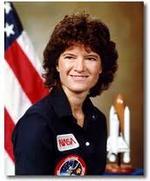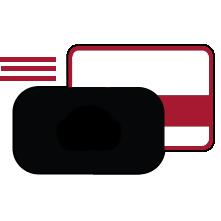The Future of the U.S. Space Program
Sally Ride
Saturday, 24 Oct 1998 at 8:00 pm – Stephens Auditorium
Sally Ride made history in 1983 when she became the first American woman in space. She grew up in Los Angeles and went to Stanford University where she was a double major in physics and English. Ride received bachelor’s degrees in both subjects in 1973. She continued to study physics at the university, earning a master’s degree in 1975 and a Ph.D. in 1978. That same year, Sally Ride beat out 1,000 other applicants for a spot in the National Aeronautics and Space Administration's (NASA) astronaut program. She went through the program’s rigorous training program and got her chance to go into space and the record books in 1983. On June 18, Ride became the first American woman in space aboard the space shuttle Challenger. As a mission specialist, she helped deploy satellites and worked other projects. She returned to Earth on June 24. The next year, Sally Ride again served as a mission specialist on a space shuttle flight in October. She was scheduled to take a third trip, but it was cancelled after the tragic Challenger accident on January 28, 1986. After the accident, Ride served on the presidential commission that investigated the space shuttle explosion.After NASA, Sally Ride became the director of the California Space Institute at the University of California, San Diego, as well as a professor of physics at the school in 1989. In 2001, she started her own company to create educational programs and products known as Sally Ride Science to help inspire girls and young women to pursue their interests in science and math. Ride serves as president and CEO. For her contributions to her field and to society, Sally Ride has received many honors, including the NASA Space Flight Medal and the NCAA’s Theodore Roosevelt Award. She has been inducted to the National Women’s Hall of Fame and the Astronaut Hall of Fame.
Cosponsored By:
- College of Engineering
- Committee on Lectures (funded by Student Government)
Stay for the entire event, including the brief question-and-answer session that follows the formal presentation. Most events run 75 minutes.
Sign-ins are after the event concludes. For lectures in the Memorial Union, go to the information desk in the Main Lounge. In other academic buildings, look for signage outside the auditorium.
Lecture Etiquette
- Stay for the entire lecture and the brief audience Q&A. If a student needs to leave early, he or she should sit near the back and exit discreetly.
- Do not bring food or uncovered drinks into the lecture.
- Check with Lectures staff before taking photographs or recording any portion of the event. There are often restrictions. Cell phones, tablets and laptops may be used to take notes or for class assignments.
- Keep questions or comments brief and concise to allow as many as possible.



